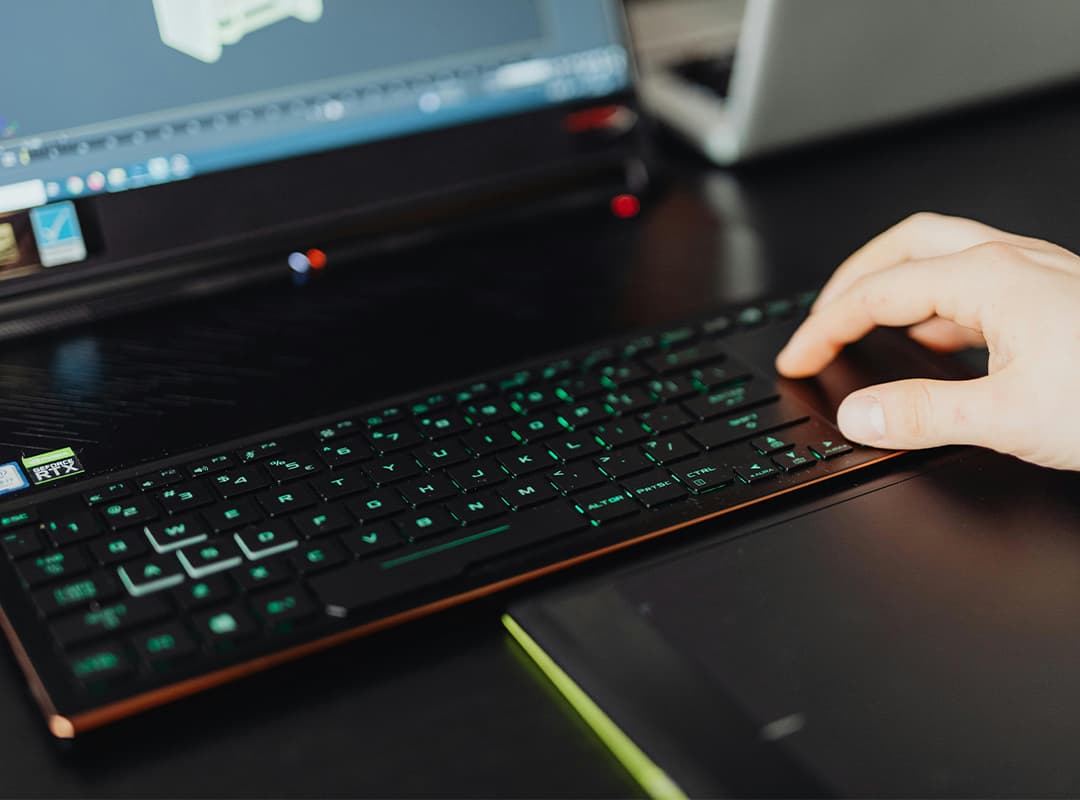Biomechanical ballet simulation applies biomechanics to improve ballet performance and reduce injury risks. By analyzing dancers’ movements, this technique offers data-driven insights for refining technique. This article will explore how these simulations work and their benefits for dancers. The keywords for this discussion include biomechanical theory, muscle injuries, and specific factors influencing performance.
Key Takeaways
- Biomechanical ballet simulation optimizes dance movements by applying biomechanics to enhance technique and performance while reducing injury risks.
- Advanced technologies like motion capture and electromyography are critical for analyzing dancer movements, leading to personalized training methodologies and improved performance.
- Integrating biomechanics in dance education transforms training methods, allowing for precise assessments and tailored approaches that accommodate individual dancer needs. A comparison of different approaches highlights how biomechanics can be used to optimize dance techniques and prevent injuries.
Introduction to Dance Optimization
Dance optimization is a crucial aspect of dance learning, enabling dancers to refine their technique, minimize injury risks, and enhance overall performance. By applying biomechanical principles to dance movements, dancers can achieve a more efficient and effective way of moving. This approach is particularly beneficial for professional ballet dancers, who require high technical precision and control.
Biomechanics plays a pivotal role in dance optimization by providing a scientific framework for understanding movement dynamics. Through detailed analysis of forces and motion, dancers can make data-driven adjustments to their technique, leading to improved performance and reduced injury risks. This scientific approach to dance learning ensures that dancers can push their limits safely and effectively.
In this section, we will explore the concept of dance optimization and its significance in the development of dancers. We will discuss the role of biomechanics in this process and provide an overview of the key principles and techniques involved. Additionally, we will compare different approaches to dance optimization, highlighting the benefits of using a biomechanical approach. This article aims to provide valuable information for dancers, coaches, and researchers in dance science, emphasizing the importance of integrating biomechanics into dance training.
Understanding Biomechanical Ballet Simulation

Biomechanical ballet simulation is an innovative technique that applies the principles of biomechanics to understand and optimize dance movements. This simulation provides a scientific basis for refining techniques and enhancing performance by focusing on the forces and dynamics involved in ballet.
Professional ballet dancers gain a deeper understanding of their movements, allowing them to make data-driven adjustments that improve precision and reduce injury risk. Insights from biomechanical simulations are invaluable in pushing the boundaries of dance, both in the studio and on stage.
The Role of Biomechanics in Dance Learning
Biomechanics plays a crucial role in dance learning, enabling dancers to enhance their mind-body connections and overall technique. Integrating biomechanical principles into training allows dancers to achieve greater precision, improving performance and reducing injury risks.
Studies by Chen and Ennis emphasize the importance of proper training programs to enhance physical activity and reduce injury risks.
Analyzing kinematic parameters, such as limb motion, is essential for understanding performance efficiency and preventing injuries. Data from biomechanical simulations provides a scientific basis for training methodologies, enabling personalized coaching that caters to each dancer’s unique needs.
Biomechanics offers professional ballet dancers a framework for understanding intricate movement details, allowing them to push their limits while maintaining safety and efficiency. This holistic approach ensures dancers reach their full potential without compromising their health.
Key Components of Biomechanical Analysis
Several key components are critical for optimizing dance movements through biomechanical analysis. A primary element is assessing body alignment and the joint angles during movement. Measuring joint angles allows dancers to evaluate their range of motion, which is essential for maintaining proper technique and preventing injuries.
Examining limb movement, particularly the angles and torque at joints, is another crucial aspect of biomechanical analysis. Assessing joint torque is vital for understanding the mechanical stresses joints endure during dance. This knowledge helps dancers refine movements to minimize strain and maximize efficiency.
Muscle activation is another significant component of biomechanical analysis. Electromyography (EMG) records the electrical signals from muscles during various activities, providing insights into muscle activation during dance movements. This information is invaluable for designing targeted strength training programs to enhance performance and reduce injury risk.
Advanced Technologies Used in Biomechanical Ballet Simulations

Advanced technologies offer precise tools to analyze and optimize dance movements in biomechanical ballet simulations. Vicon motion capture systems are commonly used to collect detailed movement data. These systems use reflective markers and multiple cameras to track and reconstruct movements in three-dimensional space.
Biomechanical analysis also employs tools like force plates and software like OpenSim and MATLAB’s BoB Biomechanics. These tools create musculoskeletal models and simulate human movement, comprehensively analyzing the forces acting on the body during dance.
Statistical Parameter Mapping (SPM) and inertial measurement units (IMUs) evaluate biomechanical differences in various dance movements. These technologies enable real-time analysis, offering immediate feedback for technique refinement and performance enhancement.
Risk Identification and Injury Prevention
Risk identification and injury prevention are critical components of dance optimization, as they enable dancers to maintain peak performance while minimizing the risk of injury. By analyzing the biomechanics of dance movements, dancers can identify potential risks and take proactive steps to mitigate them. This might involve modifying their technique, using protective equipment, or engaging in specific injury prevention exercises.
One effective strategy for reducing injury risk is incorporating slow and controlled movements into training. These movements allow dancers to focus on precision and alignment, reducing the likelihood of strain and overuse injuries. A gradual and progressive approach to dance learning ensures dancers build strength and flexibility safely, minimizing injury risks.
This section will discuss the importance of risk identification and injury prevention in dance. We will provide an overview of key strategies and techniques, emphasizing the role of biomechanics in informing these practices. Additionally, we will explore the connection between dance optimization and injury prevention, highlighting the importance of ongoing research and development in this area. By understanding the science behind movement, dancers can adopt best practices that enhance their performance and ensure their long-term health and well-being.
For more information or if you have any questions, please do not hesitate to contact us via email.
Benefits of Biomechanical Simulation for Dancers

Integrating biomechanical analysis into ballet offers numerous benefits for dancers. A primary advantage is the improvement in technique and reduction in injury risk. Understanding how muscles stabilize joints, like the ankle, helps dancers enhance performance and reduce injury likelihood.
Insights from biomechanical simulations into joint angles and muscle activation help dancers optimize movements and reduce mechanical stresses. This knowledge is crucial for designing targeted strength training programs to address specific weaknesses and improve overall performance.
For professional ballet dancers, biomechanical insights contribute to developing dancer-specific strength and conditioning programs. These programs enhance performance and ensure longevity, allowing dancers to maintain peak condition throughout their careers.
Case Studies: Successful Implementation in Ballet Schools

Several ballet schools have successfully implemented biomechanical simulation techniques to enhance training methods. One notable example is a ballet school that integrated motion capture technology, leading to a measurable increase in student engagement and learning outcomes. Students in these programs reported fewer injuries and improved movement efficiency.
Analyzing dance movements through biomechanical simulations has allowed schools to develop tailored training plans accommodating individual strengths and weaknesses. This personalized approach ensures each dancer can achieve their full potential while minimizing injury risk.
Incorporating biomechanical analysis into training has also improved the overall aesthetic quality of dance performances. Visualizing and correcting students’ movements in real-time allows instructors to fine-tune performances to achieve the highest standards of artistry and precision.
Comparing Traditional and Biomechanical Training Methods
Traditional ballet training methods often rely on subjective assessments and slow improvements. In contrast, biomechanical ballet simulation allows precise assessment of dance movements, identifying optimal techniques and enhancing performance. A comparison between traditional and biomechanical training methods reveals that understanding the relationship between muscle activation and joint angles helps dancers achieve greater movement efficiency.
Research indicates that different ballet styles, like Balanchine and classical, influence injury risks due to variations in jump techniques. The Balanchine style, characterized by fast footwork and specific jumping techniques, may lead to different physical impacts compared to classical ballet. Understanding these mechanics improves injury prevention strategies and better footwear design for dancers.
As ballet education evolves, emphasis on diversity and inclusion is growing. Biomechanical tools can tailor training to individual needs, ensuring dancers of all backgrounds benefit from the latest advancements in dance science.
Research and Development in Biomechanical Ballet
Research at the intersection of biomechanics and dance is driving innovative approaches to improve performance and safety. Current studies focus on quantifying performance metrics and exploring methods to enhance training safety. These research initiatives pave the way for future advancements in ballet training and performance methodologies.
Integrating biomechanics in dance is about understanding the science behind movement and using that knowledge to push the boundaries of what dancers can achieve. This ongoing research is crucial for the continued development of ballet as an art form and a sport.
The potential for further advancements in biomechanical ballet simulations is immense. From AI-driven feedback systems to virtual reality training environments, the future of dance is poised to be more dynamic and scientifically grounded.
Practical Applications: From Studio to Stage
Biomechanical simulations provide practical insights for both studio practice and live performances. Revealing the most efficient movement patterns, these simulations allow dancers to refine their technique in the studio before performing on stage. This iterative process ensures dancers work at their best in front of an audience.
Choreographers benefit from biomechanical analysis by designing movements that minimize injury risk during live performances. Real-time feedback allows dancers to adjust movements, enhancing performance quality and safety dynamically.
Future Prospects of Biomechanical Ballet Simulation

The future of biomechanical ballet simulation looks promising, with emerging technologies like AI and virtual reality set to revolutionize ballet training. These technologies offer personalized feedback and immersive experiences, making high-quality ballet education more accessible.
Remote learning is another exciting prospect, allowing dancers worldwide to benefit from biomechanical insights without needing physical presence. This connection democratization of knowledge ensures that ballet can flourish in diverse and inclusive ways.
The focus on health and wellness in dance training will expand, promoting a more holistic approach to education through biomechanics. Integrating scientific principles with artistic expression, the future of ballet promises to be both innovative and inspiring.
Summary
Biomechanical ballet simulation represents a significant advancement in dance, offering a scientific approach to understanding and optimizing movement. By integrating biomechanics into training, dancers can improve their technique, reduce injury risks, and achieve new heights in their performance.
The potential for further advancements is immense as we look to the future. From AI-driven feedback to remote learning, the future of ballet promises to be more dynamic and scientifically grounded than ever before. Embracing these innovations will ensure that the art of ballet continues to evolve, inspiring dancers and audiences alike.
Frequently Asked Questions
What is biomechanical ballet simulation?
Biomechanical ballet simulation leverages biomechanics to analyze and enhance dance movements by examining the forces and dynamics involved. This approach facilitates improved performance and injury prevention for dancers.
How does biomechanics improve dance learning?
Biomechanics enhances dance learning by fostering a stronger mind-body connection, refining technique, and minimizing injury risks through personalized, data-informed coaching. This approach improves performance and contributes to the overall safety and effectiveness of the dancer’s training.
What technologies are used in biomechanical ballet simulations?
Biomechanical ballet simulations commonly utilize Vicon motion capture systems, OpenSim software, force plates, and inertial measurement units to analyze and optimize dance movements effectively. These technologies enhance the understanding of movement dynamics in ballet.
What are the benefits of biomechanical simulation for dancers?
Biomechanical simulation offers dancers improved technique, reduced injury risk, optimized performance, and the ability to develop targeted strength and conditioning programs. These advantages contribute significantly to enhancing their overall dance practice.
How are biomechanical simulations applied in ballet schools?
Biomechanical simulations in ballet schools significantly enhance training by improving performance, reducing injuries, and creating individualized training plans that address each dancer’s unique strengths and weaknesses. This application of technology ultimately leads to better ballet education outcomes.



